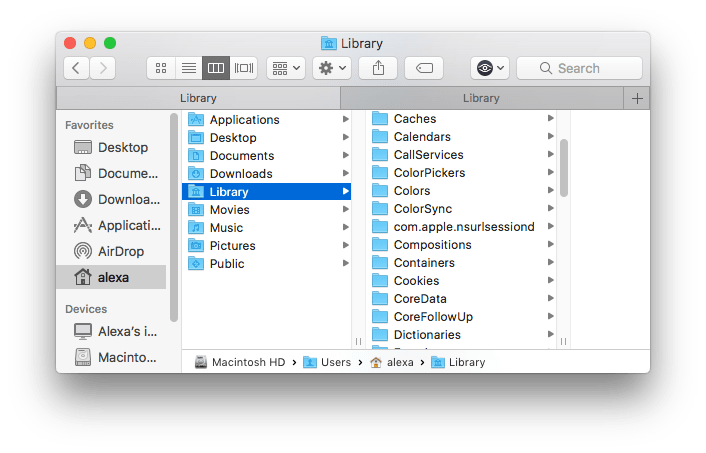In this article, you will find different methods to reveal the hidden Library Menu and access the Library Folder on your Mac. Access Library Folder On Mac. The Library Folder on your Mac contains Preference Files, Caches, and Application Support Data. While regular Mac users may not find the need to access the Hidden Library Folder, advanced. The easiest way to find your hidden /Library/ folder is to do the following: Open Finder. Hold down Alt (Option) and choose Go from the dropdown menu bar at the top of the screen. Jan 05, 2020 Before Catalina it was easy to migrate / move the sticky database file from the user library folder from the past OS installation into the user library folder new OS But it seems now in Catalina stickies no longer works the same and Catalina does not recognize the database file from Mojave.

Jan 12, 2020 Launch Terminal, located in /Applications/Utilities. Enter the following command at the Terminal prompt: Press Return. Once the command executes, you can quit Terminal. The Library folder will now be visible in the Finder. Should you ever wish to set the Library folder. Mar 19, 2020 Why can't I find my Library folder? But you cannot reply to this thread. I have the same question (10) Subscribe Subscribe Subscribe to RSS feed. Question Info Last updated February 4, 2020 Views 623 Applies to: Word / Mac / Unknown/other; Answer Bob Jones AKA: CyberTaz Replied on June 10, 2013. The Library folder is. Well, it's really hard to specify why your Documents folder disappeared on Mac. However, you can simply follow the methods as below and get your files back. Method 1: Turn off iCloud Drive to recover disappeared Documents folder. MacOS Catalina, Mojave and High Sierra allow you to put Desktop and Documents folders in iCloud Drive. Dec 12, 2016 How to Show /Library Folder in MacOS Mojave, High Sierra, Sierra. From the Mac OS Finder, go to the Users home folder. Pull down the “View” menu and choose “View Options”. Choose “Show Library Folder” in the settings options for the User home folder.
Photos User Guide
By default, the photos and videos you import into Photos are stored in the Photos library in the Pictures folder on your Mac. When you first use Photos, you create a new library or select the library that you want to use. This library automatically becomes your System Photo Library. See System Photo Library overview.
WARNING: To avoid accidentally deleting or corrupting a Photos library, do not alter the contents of a library in the Finder. If you want to copy, move, or transfer files, first export them from the Photos library; do not manually access or change the library in the Finder.
If you import items from a storage device or another folder on your Mac, you can have Photos leave the items in their original locations so they don’t take up extra space on your Mac.
Although storing files outside your Photos library is a great way to save space on your Mac, be aware that:
If you use iCloud Photos, photos and videos that are outside the Photos library aren’t stored in iCloud and won’t be accessible to any other Mac or device that uses iCloud Photos.
If you disconnect the device where the files are located, or move or rename the files in the Finder, Photos won’t be able to locate them.
Tip: If you use iCloud Photos, another good way to save space is to turn on Optimize Mac Storage in iCloud preferences. iCloud Photos then places smaller photo files on your Mac as needed, but all the full-size photos and video are still accessible to your Mac from iCloud.